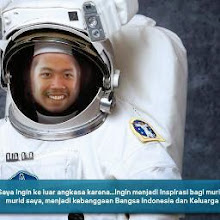Central for Research and Development for Winning
Nobel Prize in Physics at Indonesia
Philipp Lenard
| Philipp Lenard (eng) Lénárd Fülöp (hu) | |
|---|---|
 Philipp Lenard in 1900 | |
| Born | June 7, 1862 Pozsony, Kingdom of Hungary, Austrian Empire |
| Died | May 20, 1947 (aged 84) Messelhausen, Germany |
| Citizenship | Hungarian[1] in Austria-Hungary (1862-1907), German (1907-1947) |
| Nationality | Hungarian German |
| Fields | Physics |
| Institutions | University of Budapest University of Breslau University of Aachen University of Heidelberg University of Kiel |
| Alma mater | University of Heidelberg |
| Doctoral advisor | Robert Bunsen |
| Known for | Cathode rays |
| Notable awards | Nobel Prize for Physics (1905) |
Philipp Eduard Anton (von) Lenard (bahasa Hongaria: Lénárd Fülöp; 7 Juni 1862 – 20 Mei 1947) adalah fisikawan Hongaria-Jerman yang bekerja sebagai asisten Heinrich Hertz. Lenard mempelajari sifat-sifat sinar katode, sehingga ia memperoleh Hadiah Nobel dalam Fisika 1905. Lenard juga mempelajari efek fotoelektrik, menunjukkan bahwa elektron dibebaskan dari sebuah logam saat diterangi sinar ultraviolet. Ia juga menunjukkan bahwa hanya cahaya dengan panjang gelombang tertentu yang akan membebaskan elektron dan bahwa elektron dari energi yang ditentukan yang dipancarkan ke panjang gelombang yang diberikan. Penjelasan teoretis efek fotoelektrik telah diberikan oleh Albert Einstein berdasarkan teori kuantum Max Karl Ernst Ludwig Planck.
Nobel Lecture
Nobel Lecture, May 28, 1906
On Cathode Rays
From Nobel Lectures, Physics 1901-1921, Elsevier Publishing Company, Amsterdam, 1967
In order to read the text you need Acrobat Reader.
Award Ceremony Speech
Presentation Speech by Professor A. Lindstedt, President of the Royal Swedish Academy of Sciences, on December 10, 1905
Your Majesty, Your Royal Highnesses, Ladies and Gentlemen.
The Royal Swedish Academy of Sciences has decided to give this year's Nobel Prize for Physics to Dr. Philipp Lenard, Professor at the University of Kiel, for his important work on cathode rays.
The discovery of the cathode rays forms the first link in the chain of brilliant discoveries with which the names of Röntgen, Becquerel and Curie are connected. The discovery itself was made by Hittorf as long ago as 1869 and therefore falls in a period before that which the Nobel Foundation is able to take into account. However, the recognition which Lenard has earned himself by the further development of Hittorf's discovery (which is becoming of increasing importance) shows that he too deserves the same reward as has already come to several of his successors for work of a similar nature.
Cathode rays are a phenomenon which occurs when electricity is discharged in a rarified gas. If an electric current is led through a glass tube containing rarified gas, certain radiation phenomena appear both in the gas and around the metal wires or poles through which the current is carried. These phenomena change in form and nature if the gas contained in the tube is rarified even further. At a given low pressure of gas, rays are emitted from the negative pole, called the "cathode", which are invisible to the naked eye but which can be observed through certain peculiar effects. This is due to the fact that when these rays hit the walls of the glass tube, or other obstacles in their path, they cause them to glow or fluoresce and are able to bring objects against which they are directed to a glowing heat. Like rays of ordinary light they propagate in straight lines, but they differ in that they can be deflected from their straight path by means of a magnet.
The general characteristics of these cathode rays had been known a long time, although not sufficiently to clarify their true nature. Twenty years ago two basically different concepts were prevalent. According to one concept, which was supported especially by German physicists, cathode rays consisted as do normal rays of light, of undulatory motion in the ether. According to the other concept, which was mainly popular among English scientists, cathode rays were supposed to consist of particles which were ejected from the cathode and were charged with negative electricity. The decision for one or other of these theories rested on the results of experimental research. These experiments, however, were greatly impeded by the fact that one seemed to be restricted to phenomena within the glass tube itself, since the cathode rays ended at the wall of the tube. The question of whether they could at all exist outside the tube remained unanswered.
These were the circumstances prevailing when Lenard began his work on cathode rays in 1893. He started from a fact which had been observed by his great and prematurely deceased teacher Heinrich Hertz: that these rays were able to pass through thin metal plates which had been introduced into the discharge tube. At Hertz's suggestion he utilized this fact in an attempt to lead the rays out of the tube. He used for this a tube which was not wholly made of glass but terminated at one place in a very thin aluminium plate.
As the cathode rays reached Lenard's "aluminium window", it was found that they passed through it and continued their course in the air outside the tube. This constituted a discovery which was to have the most far-reaching consequences, above all for the study of the radiation phenomena themselves. It became possible to study cathode rays under much simpler and more convenient experimental conditions than before, and also to separate observations on conditions needed for the production of the rays in the tube from questions concerning their propagation and other characteristics.
As the cathode rays reached Lenard's "aluminium window", it was found that they passed through it and continued their course in the air outside the tube. This constituted a discovery which was to have the most far-reaching consequences, above all for the study of the radiation phenomena themselves. It became possible to study cathode rays under much simpler and more convenient experimental conditions than before, and also to separate observations on conditions needed for the production of the rays in the tube from questions concerning their propagation and other characteristics.
Lenard found first of all that the rays coming through the aluminium window possessed the same characteristics as those previously noted in rays inside the tube, i.e. that they cause fluorescence, can be deflected by a magnet and so on. He further proved that cathode rays have certain chemical effects such as causing impressions on photographic plates, ozonizing air, making gases conducting through so-called ionisation, etc.
It was also discovered that these rays pass unimpeded through empty space but that in gases they are subject to diffusion which increases with the density of the gas; and, moreover, that bodies in general differ in permeability, as their absorptive power bears a direct relationship to their density. Cathode rays proved to be carriers of negative electricity even in empty space and they could be deflected from their path by both magnetic and electrical fields.
Finally, Lenard showed that there are various types of cathode rays, differentiated amongst other things by the fact that they are deflected by magnets, to a greater or lesser extent. He also found that the formation of one or other type of ray is determined by the degree of gas rarification in the discharge tube.
It was also discovered that these rays pass unimpeded through empty space but that in gases they are subject to diffusion which increases with the density of the gas; and, moreover, that bodies in general differ in permeability, as their absorptive power bears a direct relationship to their density. Cathode rays proved to be carriers of negative electricity even in empty space and they could be deflected from their path by both magnetic and electrical fields.
Finally, Lenard showed that there are various types of cathode rays, differentiated amongst other things by the fact that they are deflected by magnets, to a greater or lesser extent. He also found that the formation of one or other type of ray is determined by the degree of gas rarification in the discharge tube.
When Lenard began his work on cathode rays he approached the concept of their nature from the German viewpoint noted above, whereby the rays are explained as being vibrations in the ether. Through the results of his work which we have just briefly described and in particular through the discovery that cathode rays are influenced by electrical fields, this view became untenable. He now came closer to the English view, put forward mainly by Crookes, that the rays are composed of particles which are ejected by the cathode and are bearers of negative electricity.
Since then, however, this theory has had to be modified in several significant details in order to reconcile it with phenomena which have been brought to light through the work of Lenard and others. It was shown, for example, that these particles which, according to Crookes, are ejected from the cathode - the so-called "electrons" - must have a considerably smaller mass than chemical atoms, that the velocity of these electrons can come to about one-third of the speed of light, but that there are also cathode rays which are considerably slower: the various types of cathode rays are in fact explained by the different speeds with which they are ejected from the cathode.
In his more recent work Lenard has been able to produce cathode rays with relatively slow speed, rays which are formed through the influence of ultraviolet light on bodies charged with negative electricity. This has also served to explain an important phenomenon noted by other research workers.
Since then, however, this theory has had to be modified in several significant details in order to reconcile it with phenomena which have been brought to light through the work of Lenard and others. It was shown, for example, that these particles which, according to Crookes, are ejected from the cathode - the so-called "electrons" - must have a considerably smaller mass than chemical atoms, that the velocity of these electrons can come to about one-third of the speed of light, but that there are also cathode rays which are considerably slower: the various types of cathode rays are in fact explained by the different speeds with which they are ejected from the cathode.
In his more recent work Lenard has been able to produce cathode rays with relatively slow speed, rays which are formed through the influence of ultraviolet light on bodies charged with negative electricity. This has also served to explain an important phenomenon noted by other research workers.
The research by Lenard, only a very brief report of which is given here, has been followed by a series of valuable studies by other scientists as well. Development of the theoretical basis for the theory of electrons has gone hand in hand with the experimental work.
The study of electrons, their characteristics and their behaviour in relation to matter has been given a sounder basis through these researches on cathode rays and has been gradually developed into one of the foremost theories of modern physics by Lenard himself and by other workers.
This theory is in fact not only important for the explanation of cathode rays and other closely related phenomena - the electron theory with its concepts on the constitution of matter has become of the most fundamental importance for the sciences of electricity and of light and for both the physicist and the chemist.
The study of electrons, their characteristics and their behaviour in relation to matter has been given a sounder basis through these researches on cathode rays and has been gradually developed into one of the foremost theories of modern physics by Lenard himself and by other workers.
This theory is in fact not only important for the explanation of cathode rays and other closely related phenomena - the electron theory with its concepts on the constitution of matter has become of the most fundamental importance for the sciences of electricity and of light and for both the physicist and the chemist.
It is clear that Lenard's work on cathode rays has not only enriched our knowledge of these phenomena, but has also served in many respects as a basis for the development of the electron theory. Lenard's discovery that cathode rays can exist outside the discharge tube, in particular, has opened up new fields of research in physics.
It gave an impetus to the search for other thus far unknown sources of similar rays, and the revolutionary discoveries by past Nobel Prize winners - Röntgen, Becquerel and the two Curies - and by other scientists which have followed can well be considered the fruits of this impetus and links in the history of development of one and the same science.
It gave an impetus to the search for other thus far unknown sources of similar rays, and the revolutionary discoveries by past Nobel Prize winners - Röntgen, Becquerel and the two Curies - and by other scientists which have followed can well be considered the fruits of this impetus and links in the history of development of one and the same science.
Because of the overall importance of Lenard's work, and because of its scientific value and pioneering nature, the Royal Swedish Academy of Sciences has decided to award him the Nobel Prize in Physics for the year 1905.
From Nobel Lectures, Physics 1901-1921, Elsevier Publishing Company, Amsterdam, 1967
Ucapan Terima Kasih;
1. DEPDIKNAS Republik Indonesia
2. Kementrian Riset dan Teknologi Indonesia
3. Lembaga Ilmu Pengetahuan Indonesia (LIPI)
4. Akademi Ilmu Pengetahuan Indonesia
5. Tim Olimpiade Fisika Indonesia
Sumber:
Wikipedia
Nobel Prize Org.
Disusun Ulang Oleh;
Arip Nurahman
Pendidikan Fisika, FPMIPA. Universitas Pendidikan Indonesia
&
Follower Open Course Ware at MIT-Harvard University, Cambridge. USA.
Semoga Bermanfaat dan Terima Kasih























